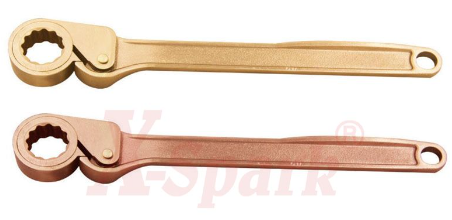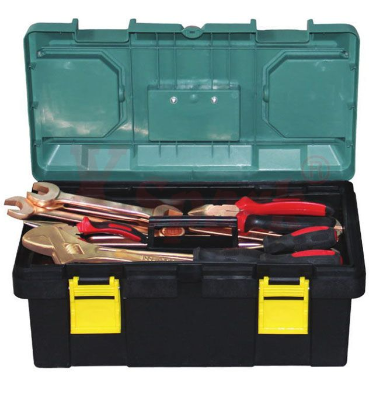6 Safety Tips For Non-Sparking Tools
Non-sparking tools are usually made of non-ferrous metals, such as brass, bronze, or alloys, such as aluminum bronze. In turn, these tools can greatly reduce sparks when they are used correctly, thereby reducing the risk of fire or explosion in hazardous work environments.
On the other hand, standard hand tools are usually made of steel alloys. When hitting or rubbing the surface, steel tools often produce sparks, which may ignite flammable vapors, dust, solvents, or liquids. In these hazardous environments, non-sparking tools add another layer of safety and can help prevent accidents. However, the key is to follow the manufacturer's recommended usage guidelines and properly maintain your non-sparking tools. Here are some safety tips for non-sparking tools:
1. Keep your non-sparking tools clean
To maximize non-sparking performance, your tool must be free of contaminants, such as iron or steel residue. For example, when these substances appear on the head of a non-sparking wrench, the tool is more likely to produce sparks. To prevent this from happening, follow the regular cleaning schedule recommended by the manufacturer.
2. Avoid using copper-based non-sparking tools containing acetylene
Tools mainly made of copper, such as aluminum bronze hammers or wrenches, should not be in direct contact with acetylene because of the risk of explosive acetylene formation. This is especially true in humid environments. In these cases, potential explosions are not caused by sparks; instead, they are caused by the reaction of copper and acetylene.
3. Proper maintenance
Compared to standard steel tools, non-sparking tools use softer metals. This may cause them to wear faster, and in turn, non-sparking tools require regular maintenance. Therefore, in order to maximize their abilities, follow the manufacturer's instructions for regular face-and head-resurfacing.
4. Use proper ventilation
Non-sparking tools are usually used in environments where flammable vapors and dust are present. The use of local ventilation systems or mechanical ventilation systems can help reduce the presence of these pollutants, thereby reducing the risk of fire or explosion on the sparking surface.
5. Understand your environment
Although non-sparking tools can reduce the risk of fire and explosion, it is still important to monitor the working environment to ensure that no explosion occurs. For example, a gas detector or infrared thermometer can help you quickly measure potential hazards on the job site.
6. Know your non-sparking tool rating
The materials used to make the tools are designed so that certain elements can be used safely. For example, aluminum bronze non-sparking tools are not safe to use around hydrogen, moisture, or acetylene. On the other hand, copper-beryllium hammers and other tools can be used in most environments but should be used carefully around acetylene. Following the manufacturer's guidelines will help you avoid using non-sparking tools in the wrong environment.
We are non-sparking hand tools suppliers. Please feel free to contact us if you need or want to know about our products.



评论
发表评论